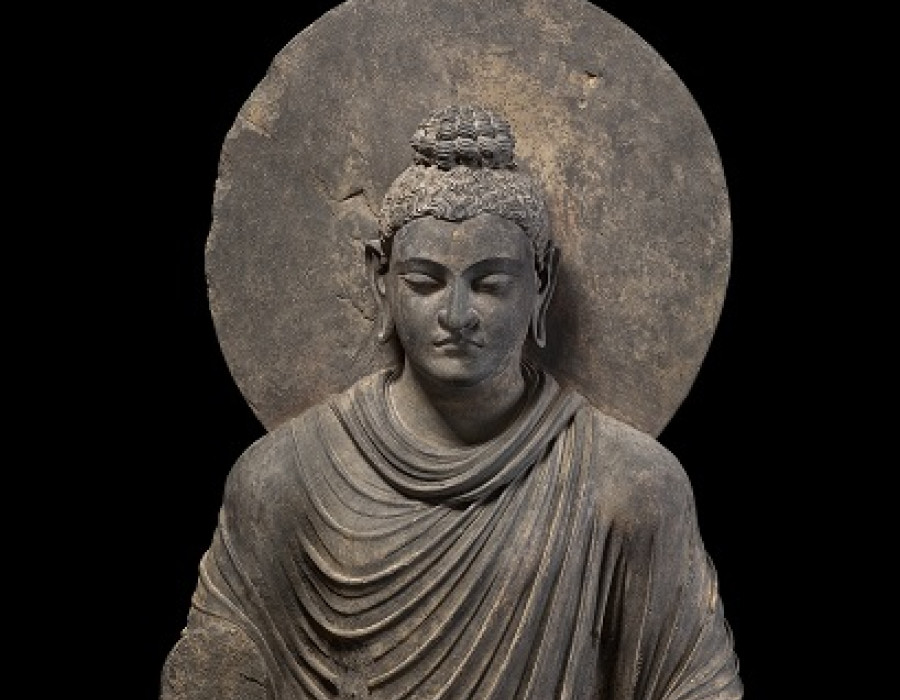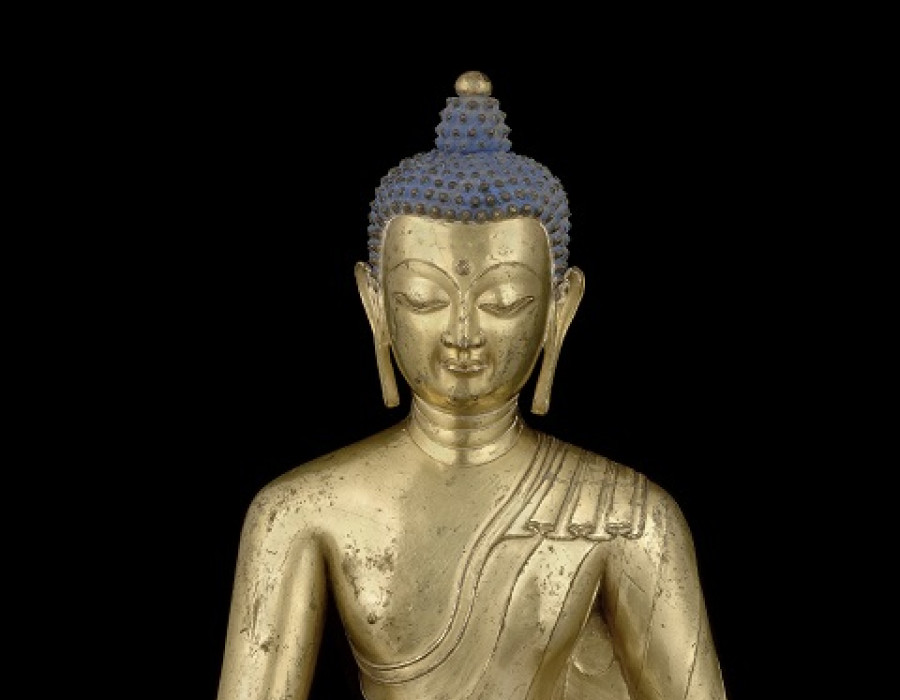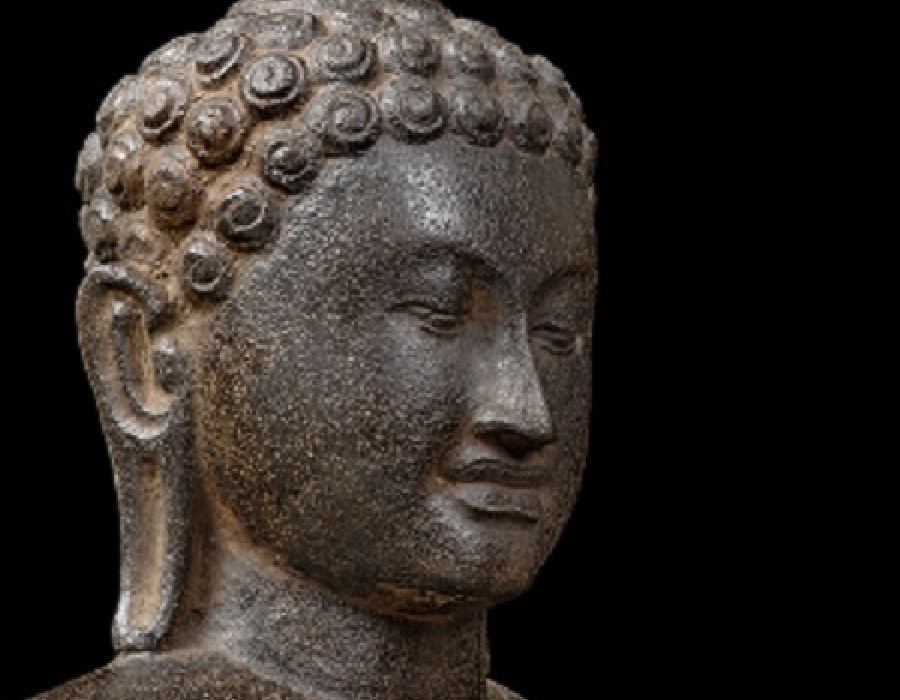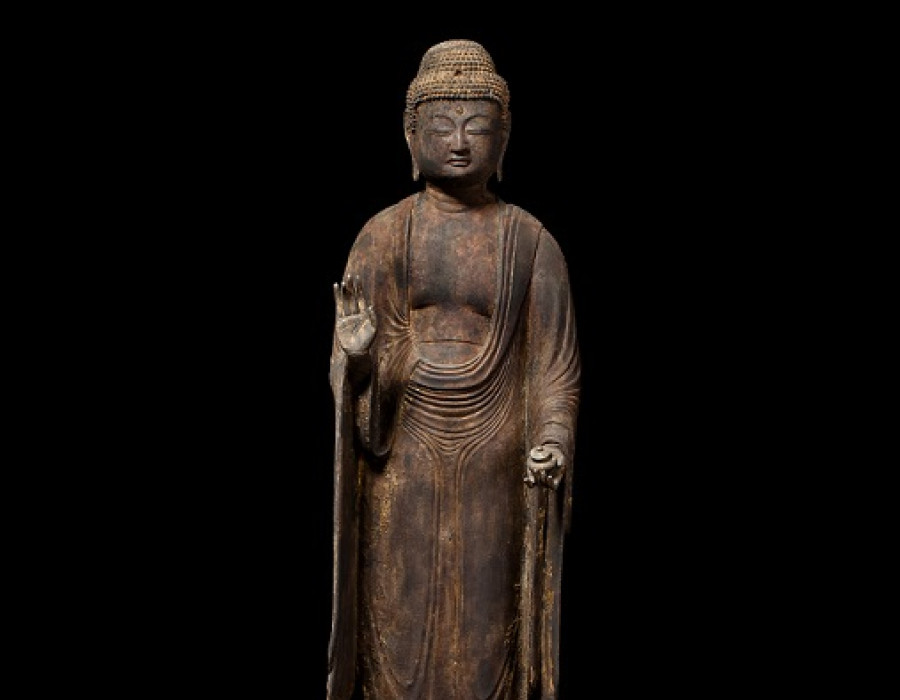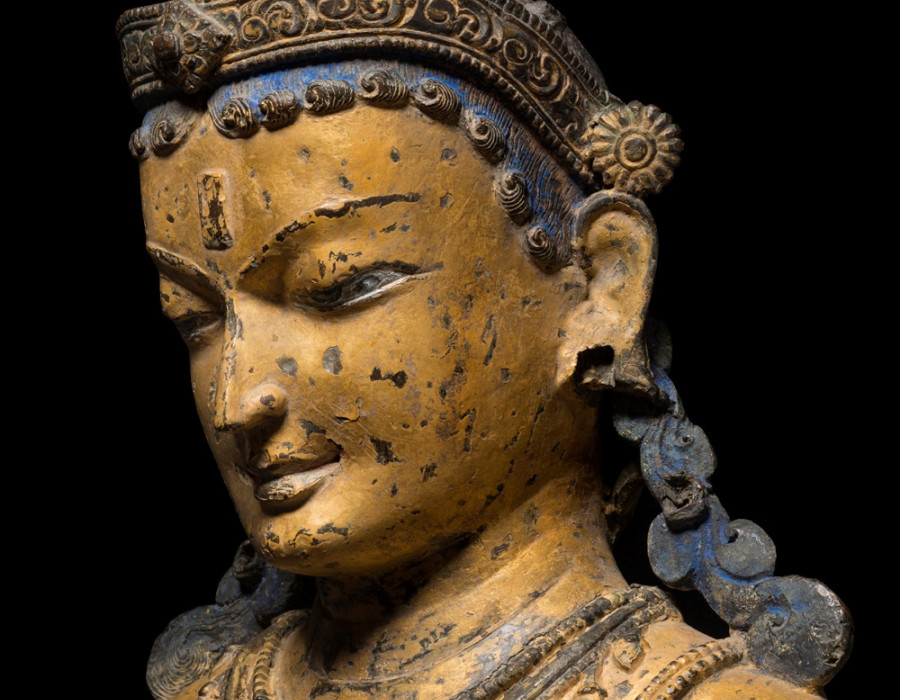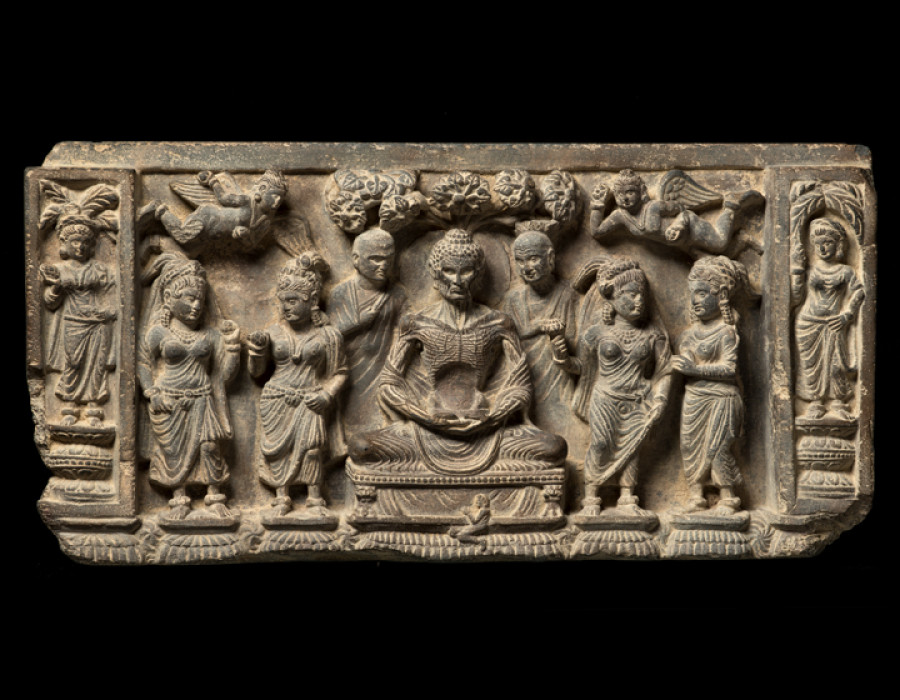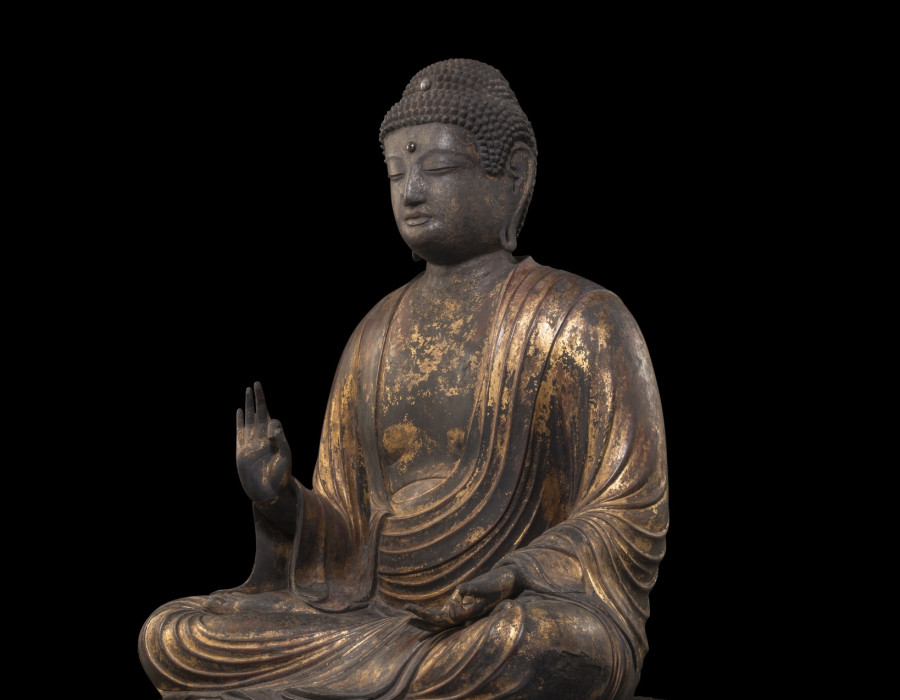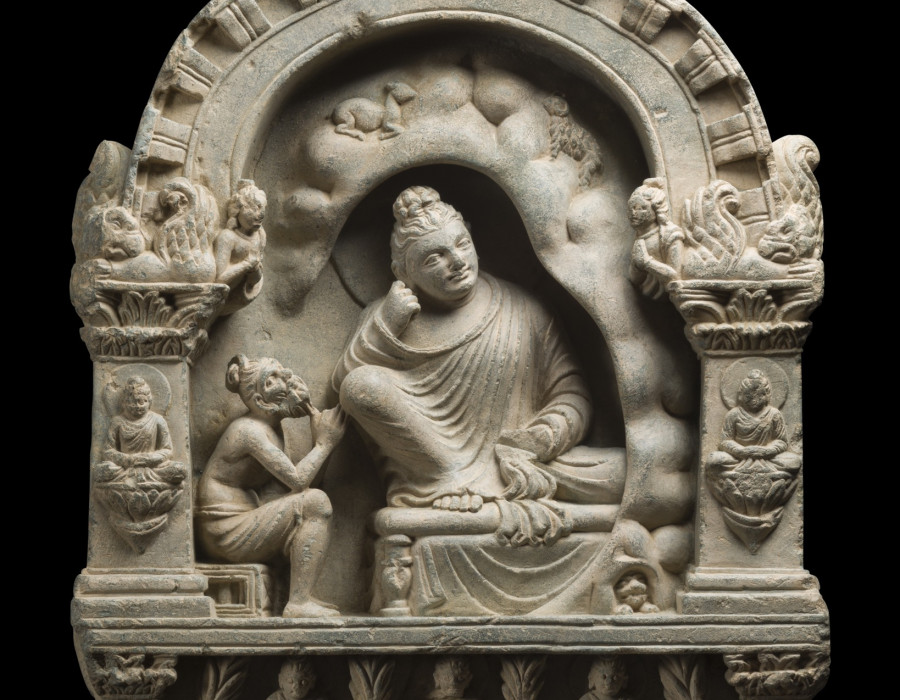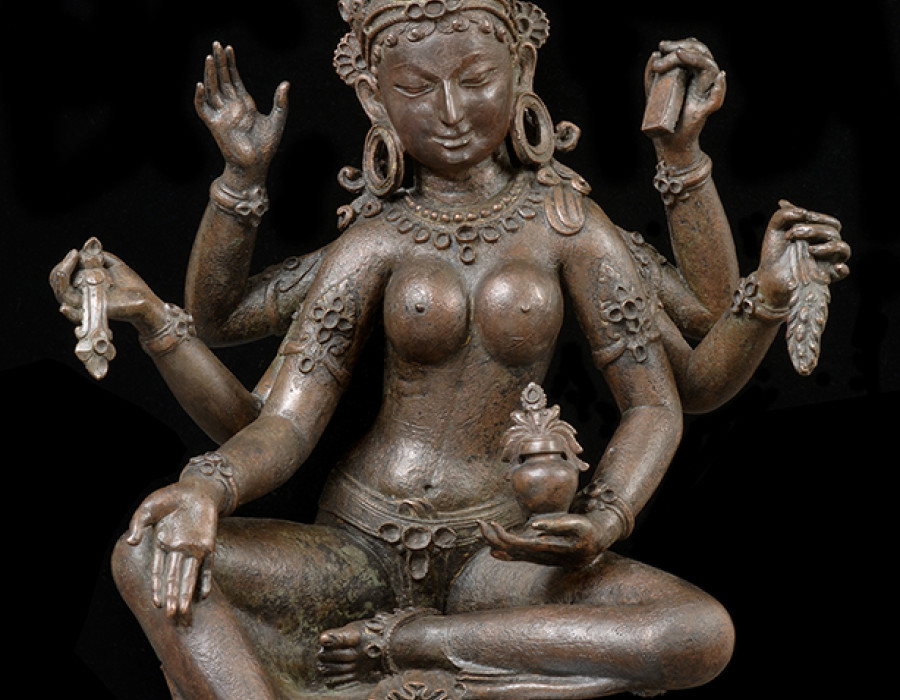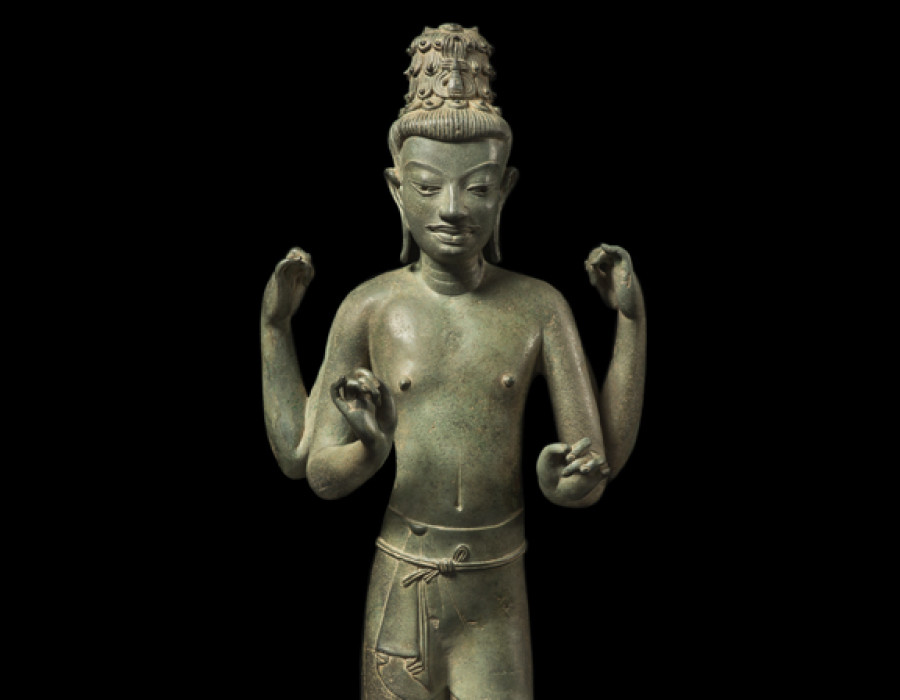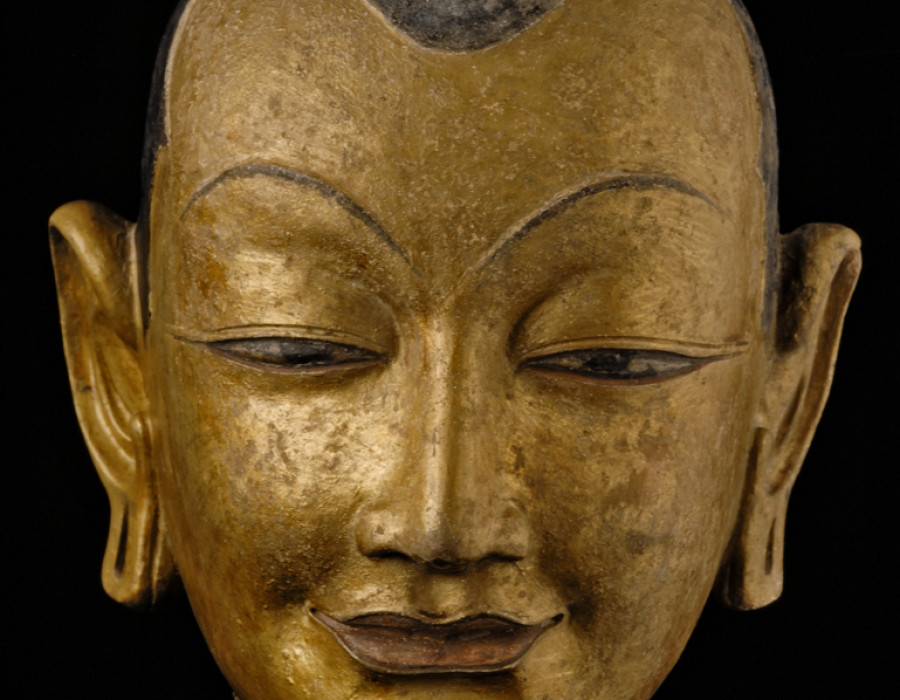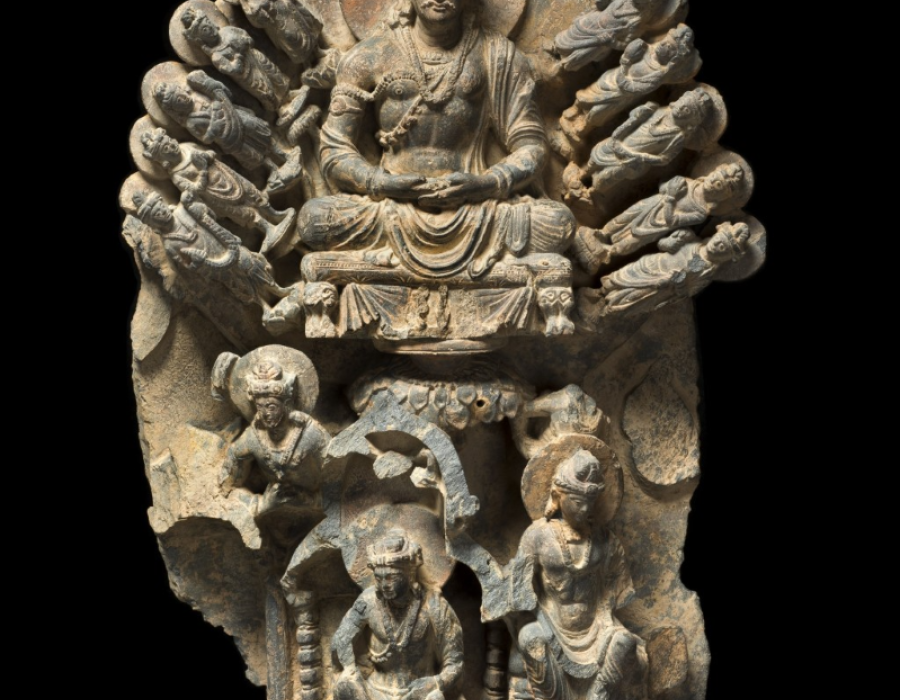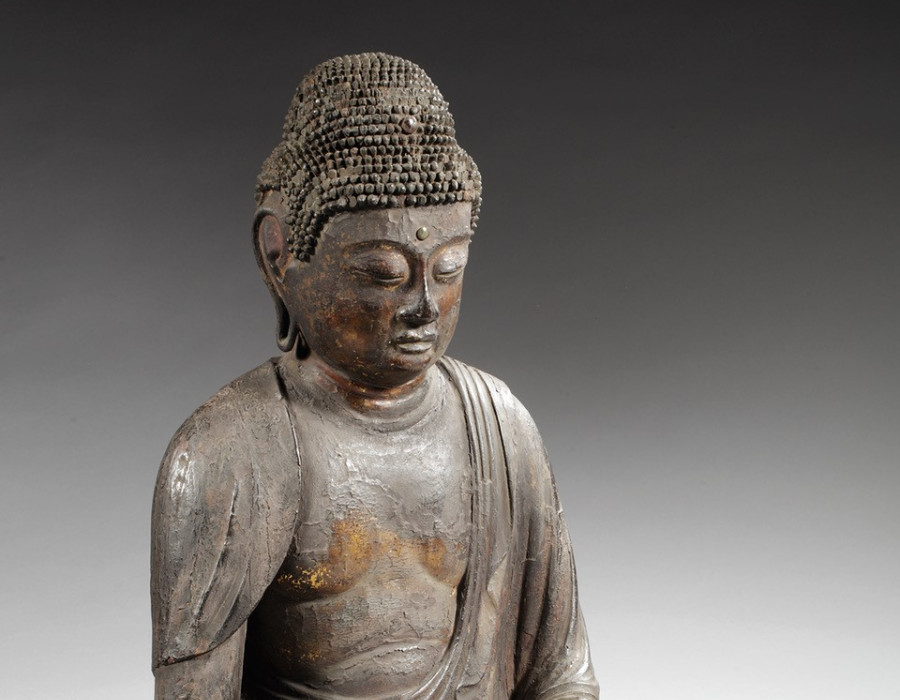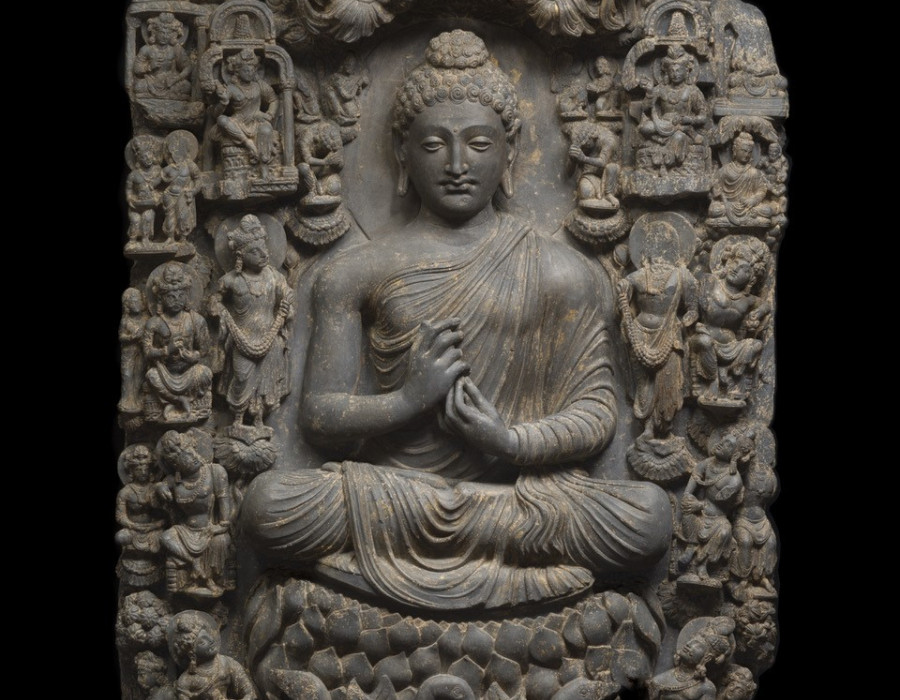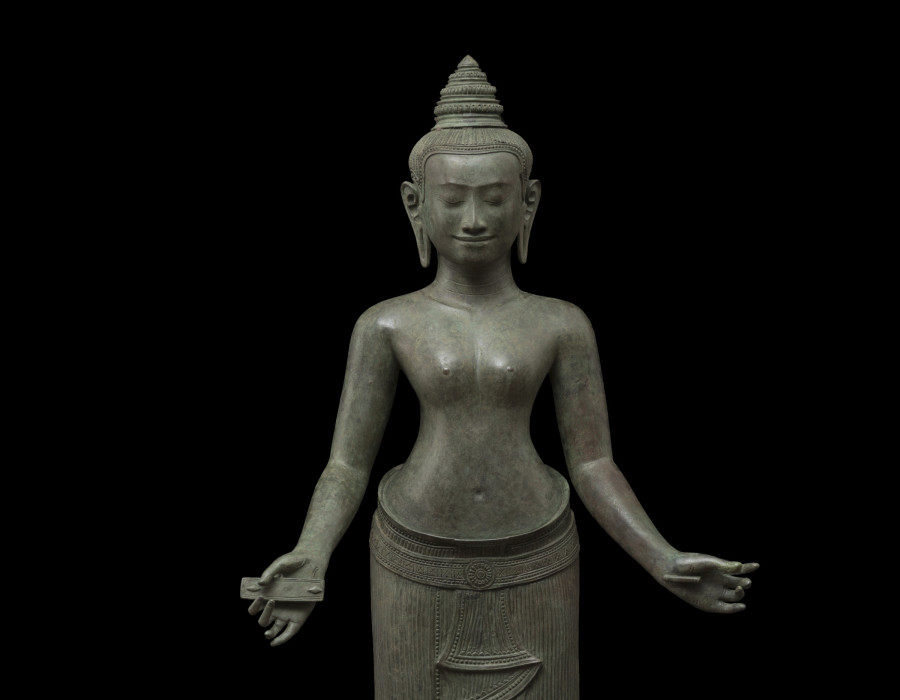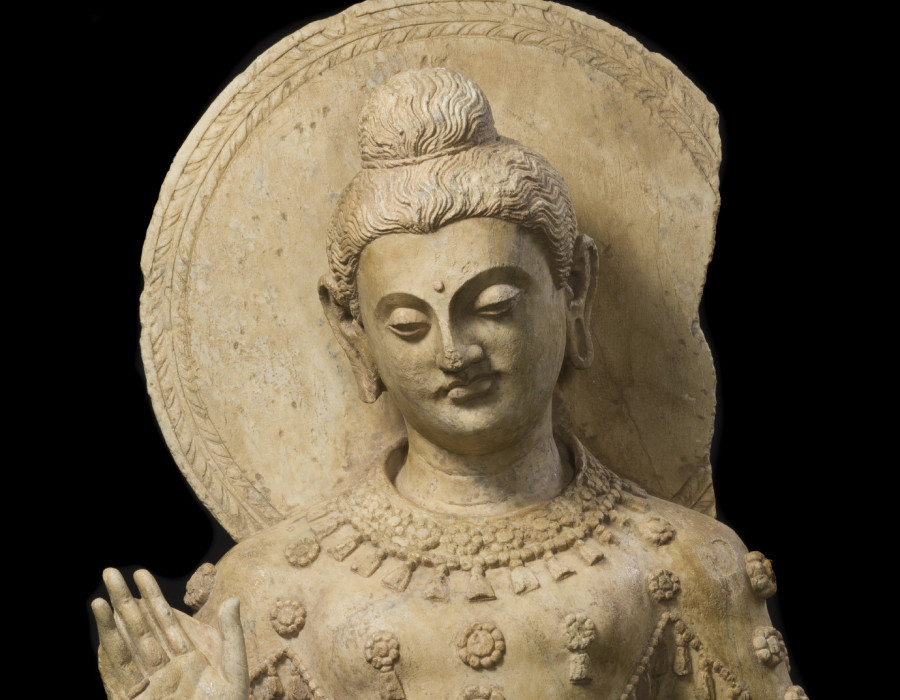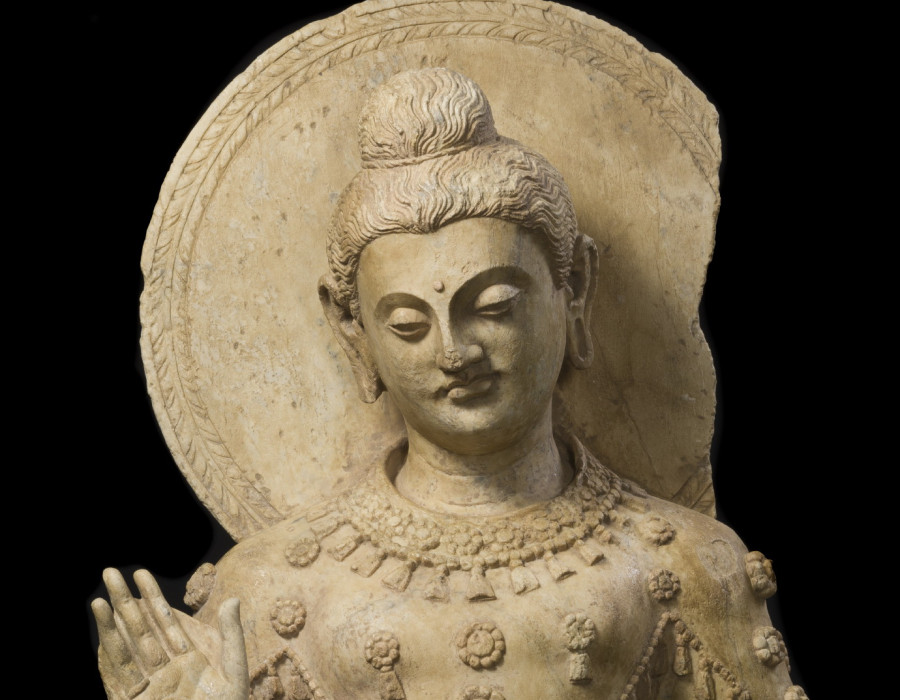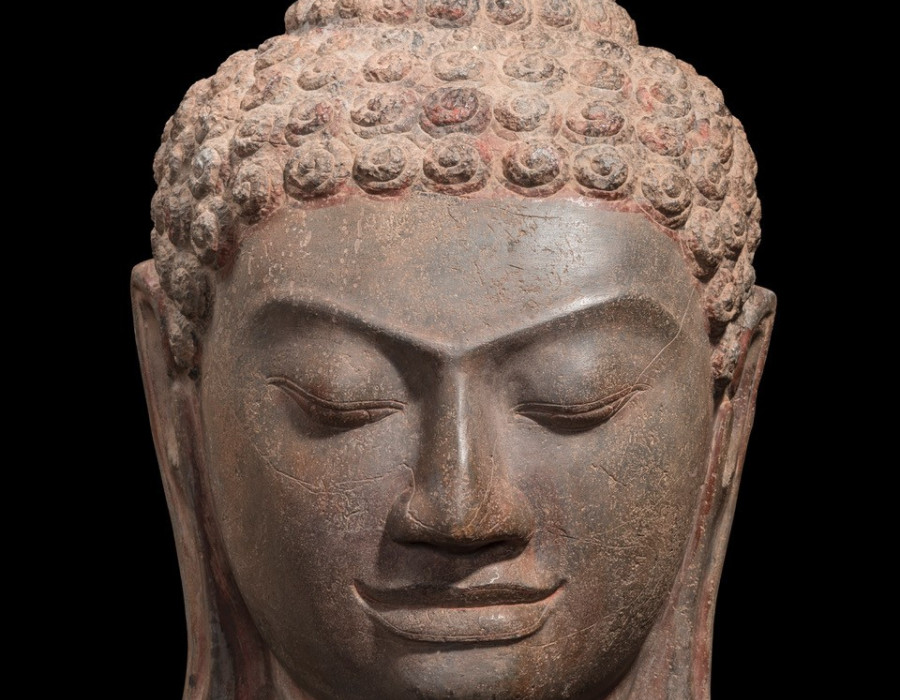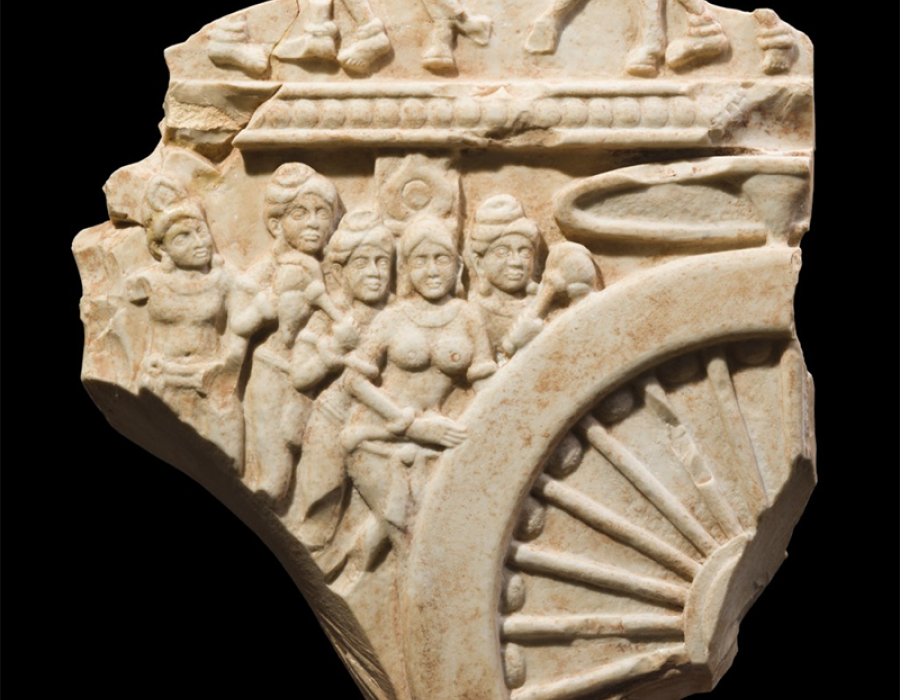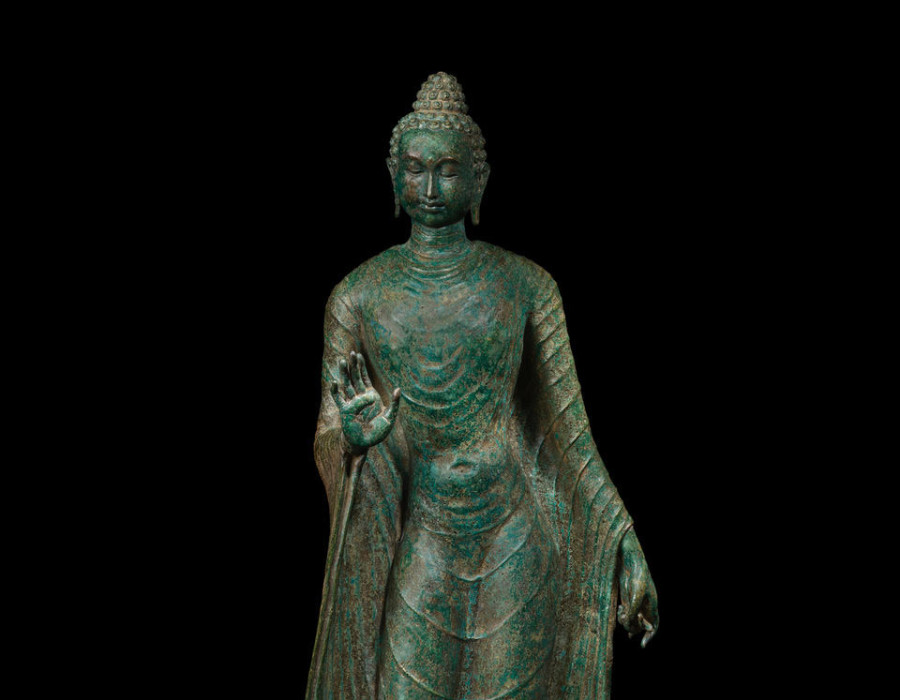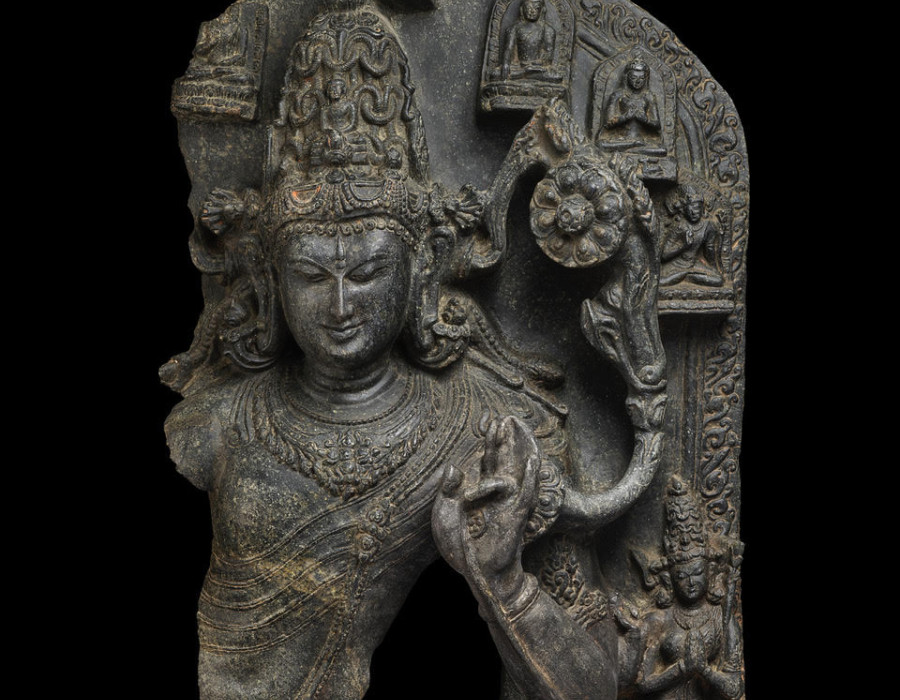
Martin Goodson
PRAJNAPARAMITA Cambodia - 12th Century
Images of Truth
Prajnaparamita, the mother of the Buddhas, is a living embodiment of the Great Wisdom Sutras, which point the way to the nameless insight of the Buddha.
 ©
© Image copyright to John Eskenazi
In this remarkable bronze sculpture from Cambodia, the goddess Prajnaparamita holds the sutra bearing the sutra that she embodies in her in her right hand. Along with a figure of Lokeshvara, she would have flanked a larger seated Buddha and they were worshipped as a trinity in the late 12th century when Cambodia was ruled by a Buddhist king, Jayavarman VII.
Maintaining the Angkor tradition, the faces of sacred images were idealised portraits of the royal family; in this case the inspiration is believed to be Jayavarman’s first wife, Jayarajadevi, who converted him to the Buddhist faith.
Her open arms indicate her regard for those who have studied the doctrine that she embodies.
———————————————————————————————
HEART OF GREAT WISDOM SUTRA
When the Bodhisattva Avalokitesvara practised the profound Great Wisdom Gone Beyond (prajna paramita) he clearly saw that the Five Aggregates are all empty and thus passed beyond suffering.
Oh Sariputra, form is not different from emptiness, emptiness is not different from form. Form is emptiness, emptiness is form.
The same applies also to feeling (or sensation), perception, mental configurations and consciousness.
Oh Sariputra, all things (dharmas) are in themselves empty, neither coming to be nor ceasing to be, neither pure nor impure, neither increasing nor decreasing. Thus within emptiness there is no form, no feeling, no perception, no mental configurations, no consciousness.
Within emptiness there is no eye, no ear, no nose, no tongue, no body, no mind; there is no field of seeing, of hearing, of smelling, of tasting, of touching, no field of consciousness.
Within emptiness there is no delusion nor extinction of delusion and so on (through the twelve links of the Chain of Dependent Causation) to old age and death, nor extinction of old age and death.
Within emptiness there is no suffering, no cause of suffering, no end of suffering, and no way to the end of suffering. and no way to the end of suffering.
Within emptiness there is no knowledge, nor any attainment either, and nothing that can be attained.
The bodhisattva relies on the Great Wisdom Gone Beyond and so his heart is free of hindrances. Because his heart is free of hindrances, he is free of fear.
Going beyond all error and delusion, he enters final Nirvana.
All past, present and future Buddhas rely on the Great Wisdom Gone Beyond and so attain to Perfect and Complete Awakening.
Know therefore that the Great Wisdom Gone Beyond is the Great Mantra, the Wisdom Mantra which is supreme and peerless, and delivers from all suffering.
It is true, not in vain; therefore I proclaim the Mantra of the Great Wisdom Gone Beyond and I proclaim it thus:
GATE GATE PARAGATE PARASAMGATE BODHI SVAHA!
(Gone, Gone, Gone Beyond, Gone altogether Beyond, Enlightenment Fulfilled.)
Extract from The Daily Devotional Chants of the Zen Centre put. The Buddhist Society, London 2008. You can find this publication here: http://www.rinzaizencentre.org.uk/books.php
You can hear the ‘Hannya Shingyo’ (Heart Sutra) chanted here. https://www.youtube.com/watch?v=Ccy708RQ1DA
Images of Truth
Buddhist art and iconography

